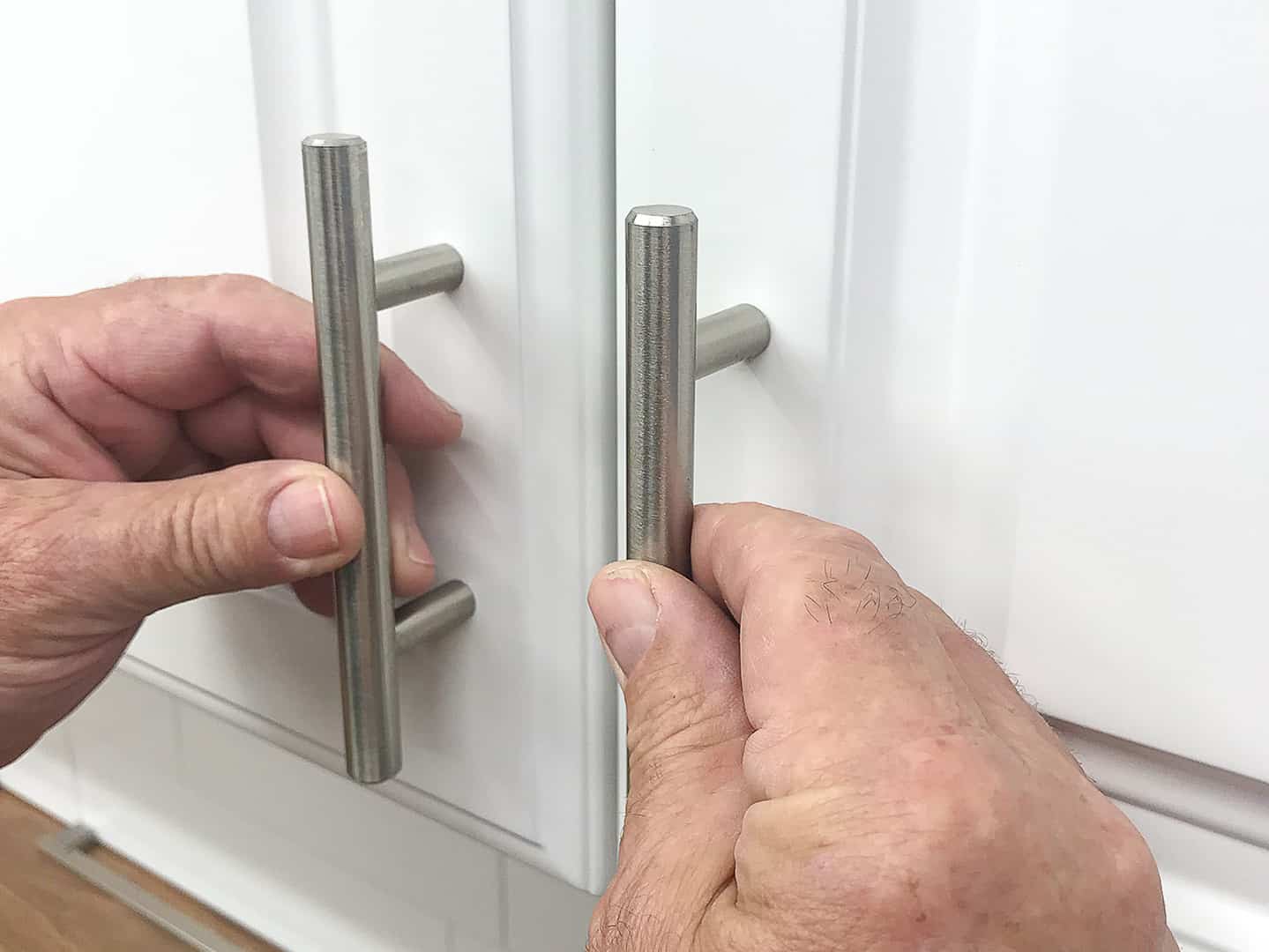Ergonomics and User Experience of Cabinet Door Handles: Where To Put Handles On Cabinet Doors

Careful consideration of cabinet handle placement significantly impacts both the usability and aesthetic appeal of kitchen and bathroom spaces. Ergonomic design ensures ease of access for all users, while thoughtful placement enhances the overall design. Ignoring these factors can lead to frustration and even injury for some users, diminishing the enjoyment of the space.
Handle Placement and Ease of Use
The optimal placement of cabinet handles depends on several factors, most notably the height of the user and the type of cabinet. The following table compares the ease of use for different handle placements, considering reach, grip, and user height.
| Handle Placement | Reach | Grip | User Height Considerations |
|---|---|---|---|
| Top | Requires reaching overhead; challenging for shorter individuals or those with limited mobility. | Can be awkward to grip, especially for larger handles. | Suitable for tall users; unsuitable for those with limited reach or mobility. |
| Bottom | Requires bending down; challenging for users with back problems or limited mobility. | Generally provides a good grip, particularly for larger handles. | Suitable for users who can comfortably bend; unsuitable for those with back pain or limited mobility. |
| Side | Generally easy to reach for most users. | Offers a comfortable grip, especially with appropriately sized handles. | A versatile option suitable for a wide range of user heights and abilities. |
| Center | Easy to reach for most users, offering a natural hand position. | Provides a good grip, especially with appropriately sized and shaped handles. | A good balance of accessibility and aesthetics, suitable for most users. |
Handle Placement and Aesthetic Appeal, Where to put handles on cabinet doors
Handle placement significantly impacts the visual appeal of cabinets. Top-mounted handles create a clean, minimalist look, often seen in modern kitchens. Bottom-mounted handles, while less common, can add a touch of understated elegance, particularly on larger cabinets. Side-mounted handles offer a more traditional look, blending well with various design styles. Center-mounted handles, often bar pulls or knobs, can add a touch of sophistication or rustic charm depending on the style and material chosen. The overall style of the kitchen or bathroom, from minimalist to traditional, will significantly influence the best handle placement choice. For example, sleek, minimalist kitchens might favor top or center-mounted handles, while more traditional designs might benefit from side-mounted handles.
Handle Placement and Accessibility
Consideration of handle placement is crucial for ensuring cabinet accessibility for people with disabilities or limited mobility. Top-mounted handles are generally unsuitable for users in wheelchairs or those with limited reach. Similarly, bottom-mounted handles present challenges for those with back problems or limited mobility. Side-mounted handles and center-mounted handles at a comfortable height offer the best accessibility for a wider range of users, including those with disabilities. For example, pull-out drawers with handles positioned at a comfortable height for wheelchair users are an excellent solution for improved accessibility. The use of D-shaped handles or handles with larger surface areas can improve grip for users with arthritis or other conditions affecting hand strength and dexterity.
